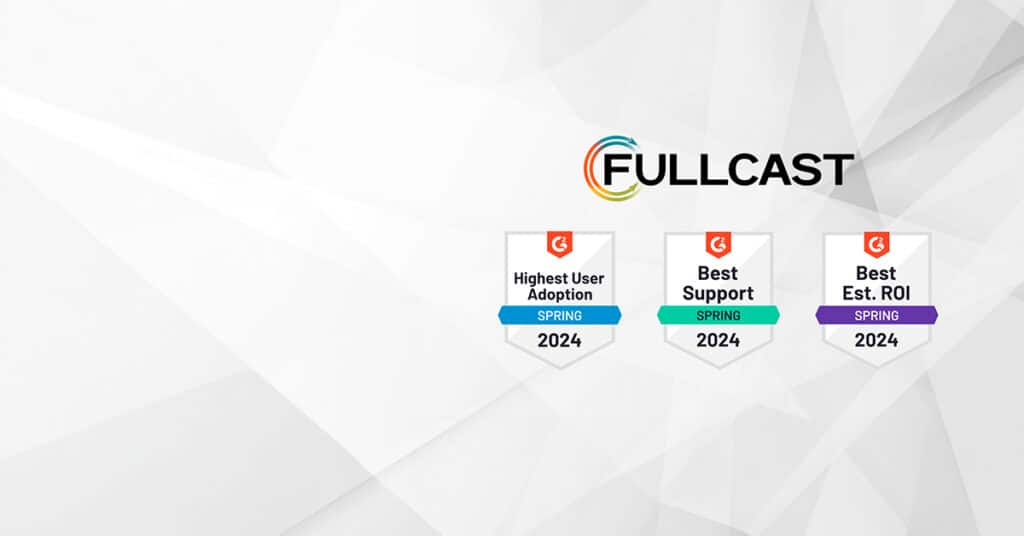Every good sales strategy depends on account scoring. At fullcast, our goal is to provide you with a comprehensive, end-to-end platform that empowers your sales strategists so they can take your sales strategy, make it actionable, and operationalized your entire Rev Ops pipeline.
What is Account Scoring?
Even the largest companies can’t follow up on every single website lead, so you need a way to sort opportunities in your pipeline and flag which companies are most likely to convert into business opportunities.
Account scoring involves taking a step back and looking at the larger picture and determining which types of clients, verticals, industries, and other categories you should be targeting. By sorting potential customers from most to least valuable, your team can focus their time and energies on targeting leads that are most likely to convert.
Lead Scoring vs Account Scoring
Lead scoring focuses on ranking contacts based on how likely they are to become a customer; account scoring takes a wider view and focuses on what organizations are most likely to become customers.
While lead scoring plays a role, it is rare that a single individual at any given company has sole discretion over purchasing decisions, so it pays to evaluate organizations as a whole. You need to carefully consider each company’s current situation, as well as the opinions of the company’s key stakeholders, the technologies they already use, their financial situation, and any major future events.
Why is Account Scoring Critical for My Sales Strategy?
So how do you figure out which organizations are most likely to purchase your product or service? You can estimate the value of an account by comparing it against your ideal customer profile (the type of organization that will receive the most value from your product or service offerings).
Account scoring is critical for healthy business planning. As the old saying goes, what gets measured gets managed. You need to establish what that ideal customer looks like, sort through and organize the vast amounts of data you have gathered, and leverage that data in a meaningful way to identify which companies your sales team should be focusing on.
You need to start by gathering the relevant data (in this case, the new leads coming into your funnel as well as data on your current customers) and using that information to determine which people, companies, and other organizations are actually interested in your product.
Fortunately, your CRM (customer relationship management) system already gathers large swaths of data. The key is figuring out how to interpret that data in a meaningful way so you can score your leads and focus on those that are most likely to actually purchase your product or service.
Why Do Companies Struggle with Account Scoring?
While machine learning is a powerful tool, it can only help you if you leverage it effectively. There are three main reasons most organizations continue to struggle with account scoring:
Finding the Needle in the Haystack
One of the drawbacks of being able to gather vast swaths of data quickly and easily is that there is a lot of information to wade through and sort. From an operational perspective, sorting that data into meaningful categories is a large undertaking, but without the ability to organize the data and present it in a useful, easy-to-understand form, you can’t gain the insights you need to appropriately score your accounts.
The Technological Gap
Another common problem is bridging the technological gap between the information consumption stage (where you learn what account scoring is and why it’s important) and the action stage where you take the information and use it to create a scalable and usable approach to account scoring that you can give to your sales team. Without the right technology, it is nearly impossible to bridge the gap between knowledge and action.
The Fullcast platform is designed to easily scale to meet your growing needs, organize your data in meaningful ways, and continually update its data set to ensure your models are based on the most up-to-date information.
Don’t Neglect the Human Factor
Data and metrics can be incredibly useful tools, but they only make up part of the puzzle. Stakeholders may be skeptical of your model, particularly if they don’t fully understand what is going on under the hood. As such, even the best account scoring model won’t add value if you can’t convince your sales team and other stakeholders to trust that the model is correct.
A successful account scoring model depends on both well-organized, easy to interpret data and the business judgment and experience of your experts. Look at how your model behaves for each account and then consult with the sales team member who handles it and compare what the model says to their lived experience with that client and learn where your model’s current shortcomings are so they can be corrected.
As such, you need to ensure you have buy-in from stakeholders. Take the time to gather feedback from your sales team, your executives, and other stakeholders by identifying pushback areas and determining the root cause of their concerns.
This is an iterative process, so you need to make sure that those lines of communication remain open. This way, if your sales team has concerns about the accuracy of your model, they can bring their concerns to you and know they will be heard. By making it clear that you value their feedback and input, your sales team and other stakeholders will be more likely to invest the time and effort required to bring problems to your attention and work with you to address these concerns and improve your model.
Account scoring can also help you match the right sales rep to the right territory, ensuring that no single salesperson is overloaded while also playing to their strengths. For example, if you have one salesperson with an in-depth knowledge of and experience with a particular product, then it makes sense to pair accounts most likely to want that product with that particular salesperson.
Operationalizing Your Account Scoring: Simplify, Solve, then Scale
Many organizations tend to overcomplicate their account scoring. Not every metric is going to bear equal weight, and trying to measure too many metrics can quickly overwhelm the whole process. By simplifying as much as possible without oversimplifying (and losing valuable insights), you can streamline your account scoring process and create a solution that supports your sales team without overwhelming them.
This is where stakeholder feedback is critical: Ask your sales team and other stakeholders what they think about your current model and what metrics they find tend to have the most impact on whether a lead converts into a sale. By pruning unnecessary metrics and getting feedback from your experts, you can create a model that suits your needs.
Finally, once you have a solution, then you can address scaling it up. This is where technology comes in. When it comes to working with large amounts of data, a simple spreadsheet isn’t going to cut it. You need a platform that allows you to quickly and easily access the information you need and help you refine your process over time.
For example, we talked to one client that that 18.8 million accounts. Assuming most businesses have multiple products, your sales team will need to determine an account scoring model for each product, which generates millions upon millions of records. Excel is an excellent tool, but it isn’t designed to handle that much data.
You may want to use Excel to create a rough draft of your scoring model as you jot down ideas and review different factors and variables, but in order to scale, you are going to need a solution that can handle vast quantities of data, capture the intent of what you are doing, and be trained to analyze the factors and metrics you are looking at in real-time so you aren’t using a model built on stale, out-of-date data.
How Can Fullcast Help?
Many companies offer lead scoring or account scoring consultancy services, but there aren’t a lot of organizations that have a platform specifically designed to handle account scoring input that could be used to drive segmentation policies that support your sales team’s coverage model and integrates with the apps you already use while safeguarding your data. Our platform is specifically designed to empower your sales team by making sense of the data and presenting it in an easy to digest format:
- Segmentation and territory: Our AI engine builds complex territory and segmentation models tailored to fit your needs.
- Coverage models: You can easily design your custom selling roles and coverage models and push those models to Salesforce with just one click.
- Quota and target planning: Quickly and easily set up and collaborate on quota planning across your entire organization and set up MBOs and KSOs for your organization from a product, team, and territory perspective.
- Workforce plans: Fullcast makes it easy to build your proposed organization chart and compare your current and future states.
Ready to get started? Book your demo today!











